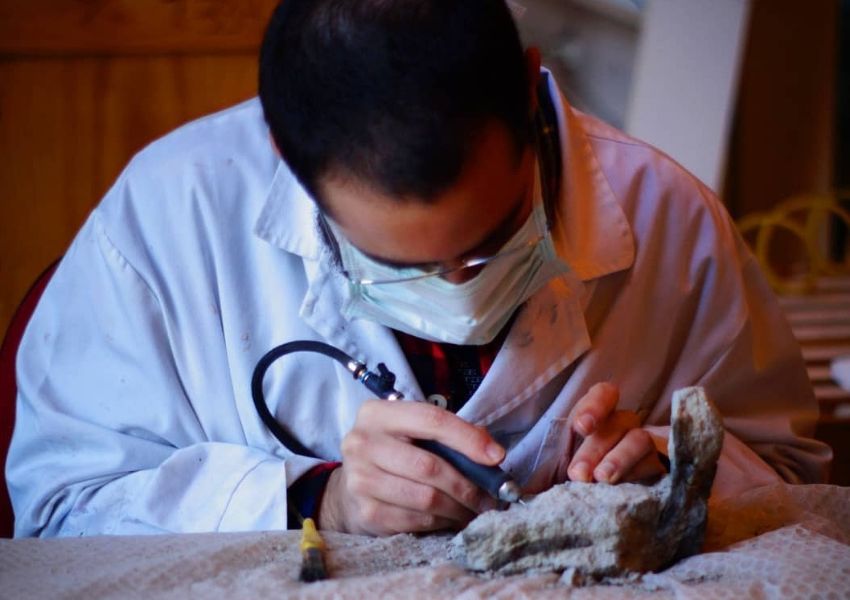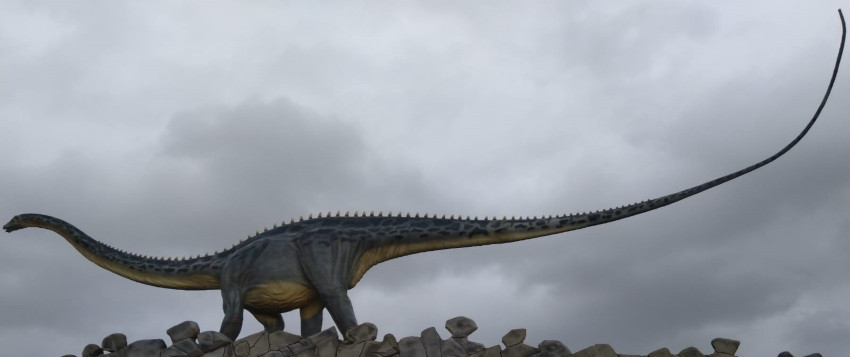
If an engineering student of the Politecnico in 1927 had managed to make a journey into the future, finding himself in Piazza Leonardo da Vinci in 2023, perhaps distracted by something, perhaps still a little sleepy, at first sight he would not realize the time it is gone. The austere facade of the rectory is always the same, giving authority to this place of knowledge. But it is by entering the classrooms, strolling in the gardens, visiting the laboratories, that he would realize that that world, although immortalized in stone less than a hundred years earlier, no longer exists.
“Upon the progress of knowledge the whole progress of the human race is immediately dependent: he who retards that, hinders this also”. Of course, after the twentieth-century crisis of positivism it is necessary to recontextualize the concept of “progress”, we can no longer imagine it as a constantly rising line, projected towards the future. Just a researcher we met this month told us: “The beauty of science is precisely this: to review, revise, study continuously”. It is one of the foundations of the scientific method.
But Fichte’s quotation maintains a substantial truth. It is undeniable that scientific research takes us much further than we think, and this applies not only to the narrowest circle of specialists, but to society in general. Because it makes us freer, more aware, more conscious of the world we live in. Because the democratization of science is also a step towards getting closer to that ideal of substantial equality on which our society is based.
It’s nice to be able to follow one’s inclinations, make one’s dreams come true, belong to a place and a community. Feel at home. This is how she told us how one of the researchers we interviewed felt. And this is how we think the first female graduate of the Politecnico felt. We tell you her story in this issue.
That student that we imagined at the beginning would today be talking to a colleague, writing an email to his professor, would see his degree certificate signed by a Rector, all female. And maybe he would remember that time when his female classmate would have been relegated to the bottom line of the graduate yearbook.

The extraordinary potential of carbon atomic wires
Many of us may not be familiar with carbon atomic wires, but at the Department of Energy’s NanoLab we discovered that they are chemical structures full of potential. This was the goal of EspLORE, a recently concluded project: to explore, precisely, these materials and their applications in the energy field. One of these applications, which researchers are exploring in new projects, is the creation of extremely secure and inviolable anti-counterfeiting tags for various commercial sectors.
Among the researchers we met at the NanoLab there is also Sonia Peggiani, who is currently working on the KEEPER project, i.e. an application of these tags to the field of sensitive documents. We asked her to tell us, in addition to the details of her research, her career at the Politecnico, the origin of her passion for energy and her future goals.
Safer urban roads for cyclists
The patent that we are presenting to you this month has the aim of drastically reducing the accidents that can occur while cycling in urban areas, in this era in which we are redesigning the ways of moving with a view to sustainability, without neglecting safety.
The principle arises from the observation that these accidents mainly occur near intersections due to poor visibility. The device, to be applied to the handlebar of the bicycle, is conceived as a navigator that activates 45 meters before the intersection, and visually communicates to the cyclist, via a three-color system, the calculated danger. It is therefore understood as a prevention device that makes you choose the least risky path.
Let’s find out how it works in detail together with the creators Gianni Garaguso, Stefano Maffei and Massimo Bianchini.
PHOTONEWS

Between the end of the 19th century and the beginning of the 20th century, some of the most complete dinosaur skeletons ever found up to then were discovered in North America, belonging to the diplodocid family. Their tails started out high and stumpy at the base, and became extremely thin at the tip. Subsequent studies hypothesized that diplodocids were the first living things to exceed the speed of sound.
Paleontologist Simone Conti used Multibody simulation, an aerospace engineering method, of which he is passionate, to verify that hypothesis. And through studying the mechanical properties of the soft tissues of those dinosaurs, he discovered that…
#ilPOLIMIrisponde: How does a kitesurf fly?
Kitesurfing is a wind-based sport where the kiter can travel on water or snow propelled by a large kite connected directly to the kiter.
The kite has an aerodynamic shape similar to the wing of an aircraft wing; the upward force of the wind into the kite – lift – counteracts the downward force of weight – drag of the kite – and is added to the thrust, i.e. the traction given by wind itself. There are several parameters that affect the way a kite flies.
Riccardo Mereu, Professor of Innovative Technologies for Energy, explains them.

Gaetanina Calvi, the first female graduate of Politecnico di Milano
Although the first enrollment of a woman at the Politecnico di Milano dates back to 1888, it is necessary to arrive at 1913 to witness the first degree – it was in civil engineering – obtained by a woman. Fifty years had passed since the foundation of the university. Her name was Gaetanina Calvi, originally from Val Brembana, daughter and granddaughter of engineers, who later dedicated herself to freelancing, teaching and philanthropy.
More than a century has passed, the women at the Politecnico have grown. In the year of the election of Donatella Sciuto as first rector, the female presence almost reached 34%. Over the years, the Politecnico has activated a series of initiatives to promote and encourage the presence of women, both in study programs and in research positions. We tell you the story of engineer Calvi to reflect on how far we have come, but to remind us that the journey is not over yet.
